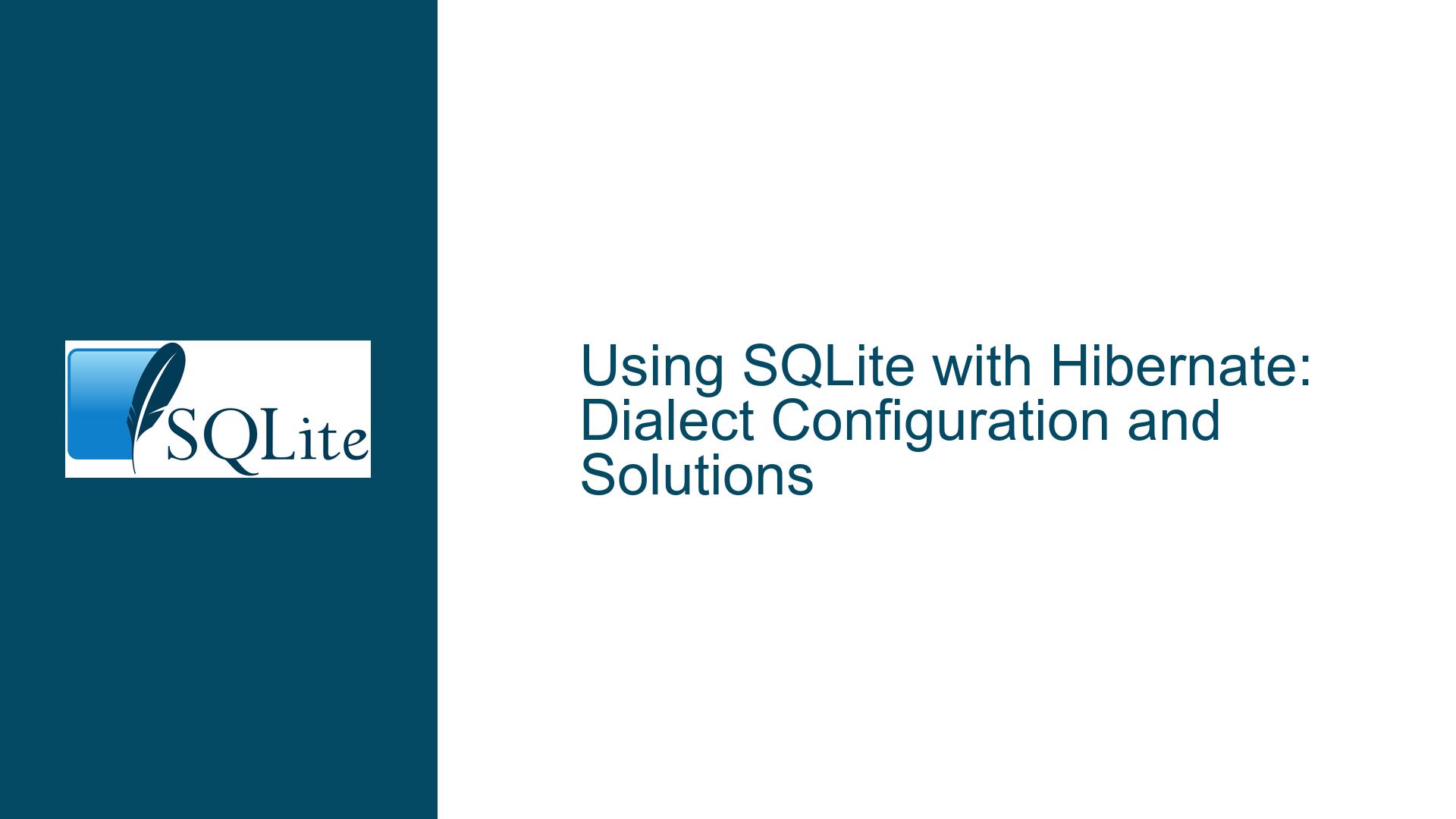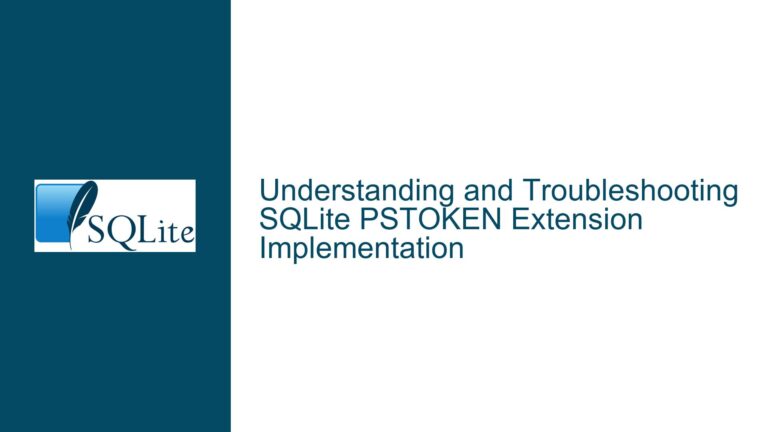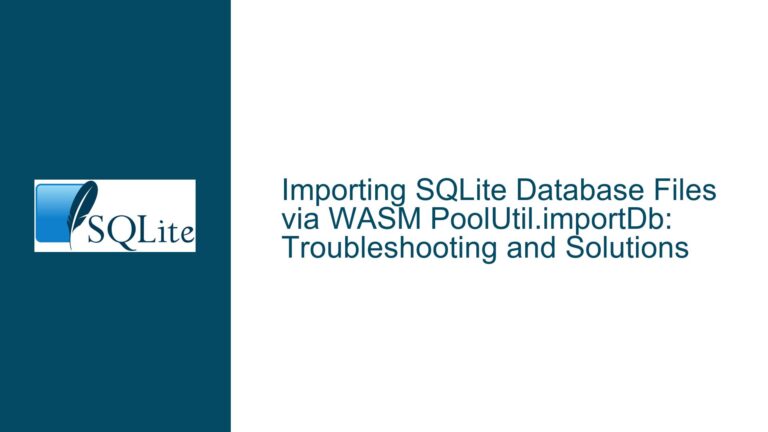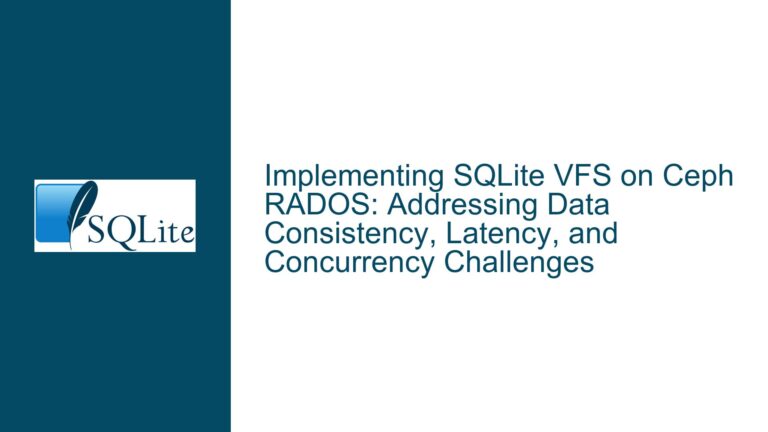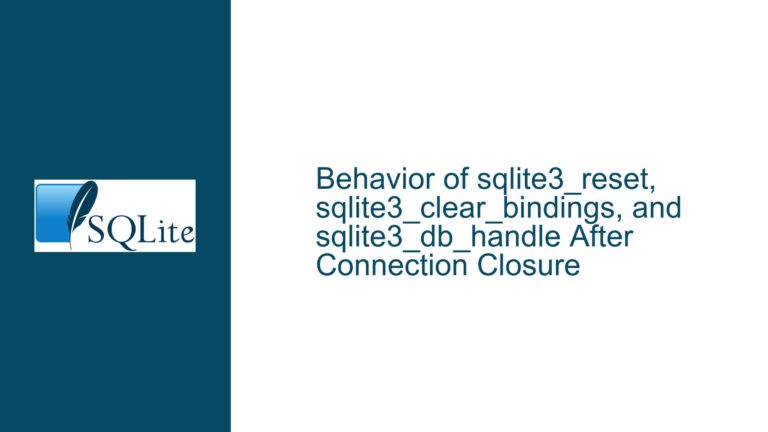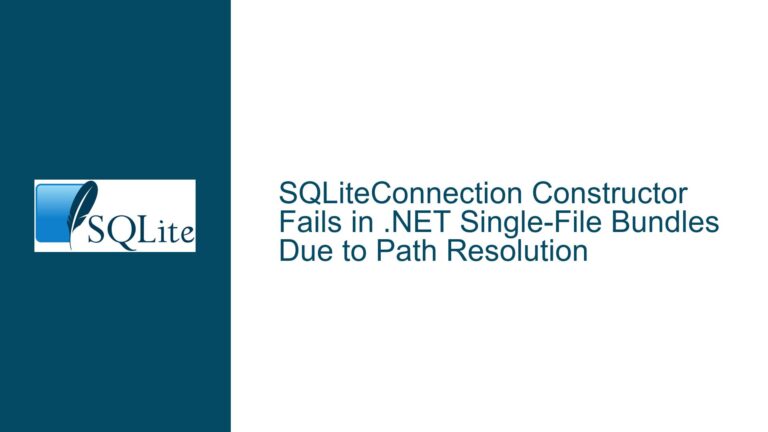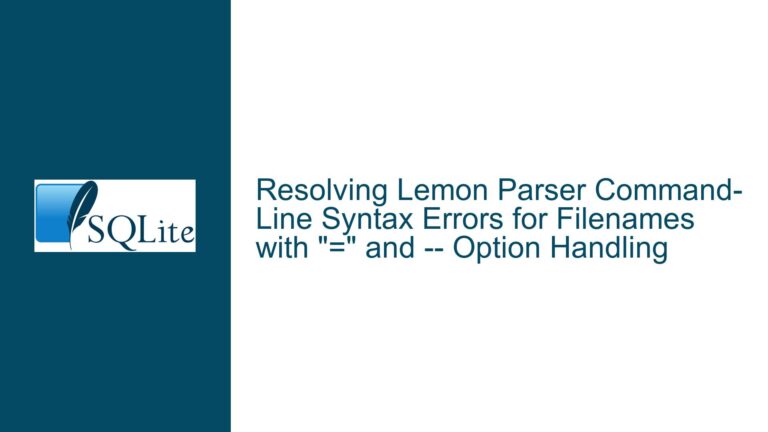Using SQLite with Hibernate: Dialect Configuration and Solutions
Lack of Official Hibernate Dialect for SQLite
When working with Hibernate, a popular Object-Relational Mapping (ORM) framework for Java, developers often rely on database-specific dialects to bridge the gap between Hibernate’s generic SQL generation and the unique features of the underlying database. SQLite, being a lightweight, serverless, and embedded database, is a common choice for small-scale applications, prototypes, and educational projects. However, one of the most significant challenges developers face when integrating SQLite with Hibernate is the absence of an official Hibernate dialect for SQLite. This issue arises because Hibernate, by default, does not include a built-in dialect for SQLite, unlike other databases such as MySQL, PostgreSQL, or Oracle.
The lack of an official dialect means that Hibernate cannot automatically generate SQL queries optimized for SQLite’s specific syntax and behavior. SQLite has unique characteristics, such as its dynamic typing system, limited ALTER TABLE support, and absence of certain SQL features like stored procedures. These differences necessitate a custom dialect to ensure seamless integration with Hibernate. Without a proper dialect, developers may encounter errors related to SQL syntax, data type mismatches, or unsupported operations when attempting to use SQLite with Hibernate.
This issue is particularly problematic for Java students and developers who are new to Hibernate and SQLite, as they may not have the expertise to create or configure a custom dialect. Additionally, the absence of an official dialect forces developers to rely on third-party solutions, which may vary in quality, maintenance, and compatibility with different versions of Hibernate and SQLite. This situation underscores the need for a reliable and well-documented approach to integrating SQLite with Hibernate.
Third-Party Dialects and Their Limitations
Given the lack of an official Hibernate dialect for SQLite, developers often turn to third-party solutions to bridge this gap. One such solution is the SQLite dialect provided by the GitHub repository gwenn/sqlite-dialect. This repository offers a custom Hibernate dialect for SQLite, which aims to address the compatibility issues between Hibernate and SQLite. However, while third-party dialects like this one can be useful, they come with their own set of limitations and challenges.
First, third-party dialects may not always be up-to-date with the latest versions of Hibernate or SQLite. This can lead to compatibility issues, especially when new features or changes are introduced in either Hibernate or SQLite. For example, if a new version of Hibernate introduces changes to its internal SQL generation logic, a third-party dialect that has not been updated accordingly may fail to work correctly. Similarly, if SQLite introduces new features or changes its behavior, the dialect may need to be updated to reflect these changes.
Second, third-party dialects may not cover all the edge cases or specific features of SQLite. SQLite’s dynamic typing system, for instance, allows for flexible data storage but can also lead to unexpected behavior when interacting with Hibernate’s strongly-typed ORM model. A dialect that does not fully account for these nuances may result in runtime errors or data inconsistencies. Additionally, SQLite’s limited support for certain SQL features, such as ALTER TABLE operations, may require special handling in the dialect to avoid errors during schema updates or migrations.
Third, the quality and reliability of third-party dialects can vary widely. Some dialects may be well-maintained and thoroughly tested, while others may be abandoned or poorly documented. This makes it difficult for developers to assess the suitability of a given dialect for their specific use case. Furthermore, relying on a third-party dialect introduces a dependency on an external project, which may pose risks in terms of long-term support and maintenance.
Despite these limitations, third-party dialects remain a viable option for developers who need to use SQLite with Hibernate. However, it is essential to carefully evaluate the available options, consider the potential risks, and be prepared to address any issues that may arise during development.
Implementing a Custom SQLite Dialect and Best Practices
For developers who require a more robust and tailored solution, implementing a custom SQLite dialect for Hibernate may be the best approach. Creating a custom dialect allows developers to address specific compatibility issues, optimize SQL generation for SQLite’s unique features, and ensure long-term maintainability. While this approach requires a deeper understanding of both Hibernate and SQLite, it offers greater control and flexibility compared to relying on third-party solutions.
To implement a custom SQLite dialect, developers should start by extending Hibernate’s Dialect class and overriding the necessary methods to handle SQLite’s specific requirements. For example, the custom dialect should define the appropriate SQL types for SQLite’s dynamic typing system, such as mapping Hibernate’s StringType to SQLite’s TEXT type. Additionally, the dialect should handle SQLite’s limited support for ALTER TABLE operations by providing custom implementations for schema updates, such as creating a new table with the desired structure and copying data from the old table.
Another important consideration when implementing a custom dialect is SQLite’s transaction handling and concurrency model. SQLite uses a file-based locking mechanism to manage concurrent access, which can lead to performance bottlenecks in high-concurrency scenarios. The custom dialect should be designed to minimize the risk of contention by optimizing transaction boundaries and leveraging SQLite’s WAL (Write-Ahead Logging) mode, which can improve concurrency and performance.
In addition to implementing the custom dialect, developers should follow best practices to ensure a smooth integration between Hibernate and SQLite. These best practices include:
Testing and Validation: Thoroughly test the custom dialect with different versions of Hibernate and SQLite to ensure compatibility and identify any potential issues. Automated tests should cover common use cases, edge cases, and performance scenarios.
Documentation: Provide comprehensive documentation for the custom dialect, including installation instructions, configuration options, and examples of common use cases. This will help other developers understand and use the dialect effectively.
Version Control and Maintenance: Maintain the custom dialect in a version-controlled repository, such as GitHub, and establish a process for regular updates and maintenance. This will ensure that the dialect remains compatible with future versions of Hibernate and SQLite.
Community Engagement: Engage with the Hibernate and SQLite communities to share the custom dialect, gather feedback, and collaborate on improvements. This can help build a community of users and contributors around the dialect, ensuring its long-term viability.
By following these best practices and implementing a custom SQLite dialect, developers can overcome the challenges of integrating SQLite with Hibernate and build robust, high-performance applications that leverage the strengths of both technologies. While this approach requires more effort upfront, it offers greater control, flexibility, and reliability compared to relying on third-party solutions.
In conclusion, the lack of an official Hibernate dialect for SQLite presents a significant challenge for developers, but it is not insurmountable. By understanding the limitations of third-party dialects, implementing a custom dialect, and following best practices, developers can successfully integrate SQLite with Hibernate and unlock the full potential of these powerful technologies. Whether you are a Java student working on a class project or a seasoned developer building a production application, the insights and strategies outlined in this guide will help you navigate the complexities of using SQLite with Hibernate and achieve your development goals.
